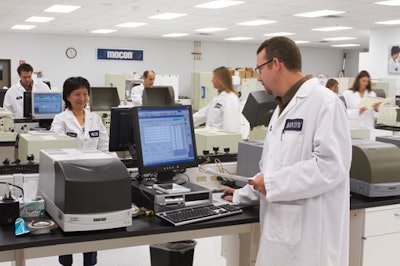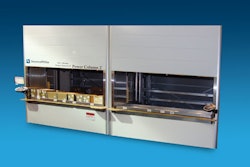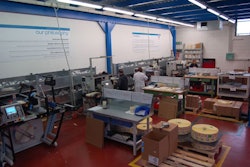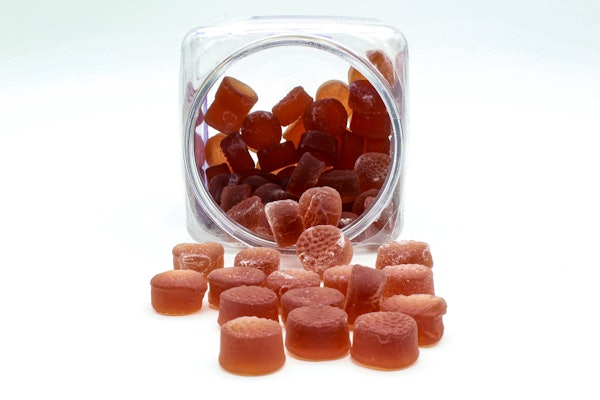
However, a common definition is the package's ability to protect its contents from potential threats—including physical, microbial, and chemical.
In healthcare packaging applications—including medical devices, biotechnology products, and pharmaceuticals—consumer health and safety are imperative. To that end, the following eight steps, encompassing design, development, and performance, help ensure package integrity success:
• Identify integrity requirements/regulations
• Define packaging/processing inputs
• Define distribution/storage factors
• Perform risk assessment
• Prototype package design
• Characterize package integrity
• Refine package design
• Verify performance integrity
1. Identify integrity requirements/regulations
Before you can begin to evaluate packaging alternatives, it is important to start with basic product knowledge. Specifically, what performance criteria will your healthcare product require in order to meet functional and shelf-life requirements?
• Sterility maintenance
• Barrier protection—gases, moisture, vacuum maintenance
• Shelf-life verification for package sterility, physical integrity, product stability for efficacy and safety, and barrier protection
• Distribution dynamics—product and package integrity
• Temperature control—insulated shippers for maintenance of product stability
A design input exercise is incomplete without a review and understanding of relevant industry requirements and guidance.
2. Define packaging/processing inputs
You need to evaluate current capabilities against desired packaging objectives. Production capabilities have a direct impact on package design and subsequent handling. For example, if you modify your package design or introduce a new product, can the equipment already in place handle it? If not, what is the cost and timing for capital expenditures, installation, testing, commercial runs, etc.
Items on the processing review list can include: aseptic or modified atmosphere packaging, clean rooms, sterilization, lyophilization, etc.
Items on the packaging review list can include: Tooling, molds, fixtures, fillers, cappers/heat sealers, labelers, coding, case packers, palletizers, etc.
3. Define distribution/storage factors
Your finished package can encounter multiple environmental and physical challenges in its journey from your distribution center to the customer. Considerations have to be given to temperature/humidity, altitude (negative pressure), cargo mode (truck, rail, sea, air), and containment (pallets, gaylords, single parcel, etc.).
In addition to the primary package, what secondary and protective packaging options need to be evaluated so that the product arrives at its destination in its intended condition, with maintenance of product safety and efficacy? Is your product sensitive to temperature, humidity, shock, vibration, or pressure differentials? Investigate and determine the application of import and export regulations, including custom requirements.
Consider the business value of partnering with a third-party logistics firm to help pave the way. Regarding temperature-sensitive products, a logistics partner is key to the development of an effective cold chain strategy for the delivery of safe and efficacious pharmaceuticals or biopharmaceuticals.
It is critical to understand and evaluate the impact of distribution, logistics, and supply chain dynamics on package integrity and incorporate these factors within your packaging design strategy.
4. Perform risk assessment
Risk assessment is a systematic process designed to identify the chance of an event or combination of events that will negatively impact the product, package, and/or its usage. Companies can hire external risk management consultants to manage the program, or they can chose to keep it in-house. Stages in the risk assessment process can include:
• Identify and assess risks
• Identify risk liability
• Identify risk management tools
• Prepare risk management plans
• Engage the appropriate team members to execute the risk management plan
• Include risk mitigation in the packaging design for integrity.
5. Package design prototypes
Now you are ready to move from the design phase into development. You have already considered design inputs for product sensitivities, regulatory requirements, packaging/processing, shipping/handling, and risk assessment. You are now ready to create prototypes for integrity evaluation.
Prototyping assistance can come from a variety of sources, including packaging suppliers and design/prototyping firms.
Significant inroads have been made in prototyping approaches in the past decade. These include 3D printers and other rapid prototyping technologies. This enables the brand owner to experiment with models prior to committing funds for expensive tooling. In addition to being a useful internal review tool, prototypes can be used for focus groups and customer feedback.
6. Characterize package integrity
The next step is to evaluate test samples that have been exposed to multiple manufacturing and processing conditions to determine if there are any protection gaps.
Testing can include:
• Leak: positive pressure, negative pressure, vacuum, tracer gas technology, gravimetric techniques
• Gases, vacuum, and/or moisture quantification
• Environmental simulation (conditioning)—temperature, humidity, and vacuum
• Sterility verification via physical integrity testing
• Dynamic distribution simulation (conditioning)—includes shipping, handling, and storage, and subsequent physical leak detection
7. Refine package design
Based on the findings of the prototype evaluation and risk assessment, coupled with regulatory requirements, make the new package iterations. Upon execution of a package design iteration, package component manufacture is typically a next step.
8. Verify performance integrity
This final step ensures that your product and package have met all of the integrity performance criteria throughout the product's labeled shelf life and its distribution and storage environments—including all environmental risks. Final review includes precise laboratory measurements/characterization of:
• Package leak rate
• Package transmission rate (oxygen, water vapor), including modeling
• Headspace analysis
• Pressure/vacuum maintenance
• Physical package integrity for sterility maintenance
• Distribution simulation
• Environmental conditioning—temperature, humidity, low pressure, high altitude
• Temperature control, as required
Defining integrity requirements is the responsibility of the brand owner. Brand owners may require assistance in the identification and definition of technologies as well as in test plans to investigate, evaluate, execute, and interpret package integrity performance.
-By By Karen Greene and Ed Emerson
Karen Greene is vice president, sales and technology, Life Packaging Technology LLC. Ed Emerson is business development manager, medical device, MOCON, Inc.
In healthcare packaging applications—including medical devices, biotechnology products, and pharmaceuticals—consumer health and safety are imperative. To that end, the following eight steps, encompassing design, development, and performance, help ensure package integrity success:
• Identify integrity requirements/regulations
• Define packaging/processing inputs
• Define distribution/storage factors
• Perform risk assessment
• Prototype package design
• Characterize package integrity
• Refine package design
• Verify performance integrity
1. Identify integrity requirements/regulations
Before you can begin to evaluate packaging alternatives, it is important to start with basic product knowledge. Specifically, what performance criteria will your healthcare product require in order to meet functional and shelf-life requirements?
• Sterility maintenance
• Barrier protection—gases, moisture, vacuum maintenance
• Shelf-life verification for package sterility, physical integrity, product stability for efficacy and safety, and barrier protection
• Distribution dynamics—product and package integrity
• Temperature control—insulated shippers for maintenance of product stability
A design input exercise is incomplete without a review and understanding of relevant industry requirements and guidance.
2. Define packaging/processing inputs
You need to evaluate current capabilities against desired packaging objectives. Production capabilities have a direct impact on package design and subsequent handling. For example, if you modify your package design or introduce a new product, can the equipment already in place handle it? If not, what is the cost and timing for capital expenditures, installation, testing, commercial runs, etc.
Items on the processing review list can include: aseptic or modified atmosphere packaging, clean rooms, sterilization, lyophilization, etc.
Items on the packaging review list can include: Tooling, molds, fixtures, fillers, cappers/heat sealers, labelers, coding, case packers, palletizers, etc.
3. Define distribution/storage factors
Your finished package can encounter multiple environmental and physical challenges in its journey from your distribution center to the customer. Considerations have to be given to temperature/humidity, altitude (negative pressure), cargo mode (truck, rail, sea, air), and containment (pallets, gaylords, single parcel, etc.).
In addition to the primary package, what secondary and protective packaging options need to be evaluated so that the product arrives at its destination in its intended condition, with maintenance of product safety and efficacy? Is your product sensitive to temperature, humidity, shock, vibration, or pressure differentials? Investigate and determine the application of import and export regulations, including custom requirements.
Consider the business value of partnering with a third-party logistics firm to help pave the way. Regarding temperature-sensitive products, a logistics partner is key to the development of an effective cold chain strategy for the delivery of safe and efficacious pharmaceuticals or biopharmaceuticals.
It is critical to understand and evaluate the impact of distribution, logistics, and supply chain dynamics on package integrity and incorporate these factors within your packaging design strategy.
4. Perform risk assessment
Risk assessment is a systematic process designed to identify the chance of an event or combination of events that will negatively impact the product, package, and/or its usage. Companies can hire external risk management consultants to manage the program, or they can chose to keep it in-house. Stages in the risk assessment process can include:
• Identify and assess risks
• Identify risk liability
• Identify risk management tools
• Prepare risk management plans
• Engage the appropriate team members to execute the risk management plan
• Include risk mitigation in the packaging design for integrity.
5. Package design prototypes
Now you are ready to move from the design phase into development. You have already considered design inputs for product sensitivities, regulatory requirements, packaging/processing, shipping/handling, and risk assessment. You are now ready to create prototypes for integrity evaluation.
Prototyping assistance can come from a variety of sources, including packaging suppliers and design/prototyping firms.
Significant inroads have been made in prototyping approaches in the past decade. These include 3D printers and other rapid prototyping technologies. This enables the brand owner to experiment with models prior to committing funds for expensive tooling. In addition to being a useful internal review tool, prototypes can be used for focus groups and customer feedback.
6. Characterize package integrity
The next step is to evaluate test samples that have been exposed to multiple manufacturing and processing conditions to determine if there are any protection gaps.
Testing can include:
• Leak: positive pressure, negative pressure, vacuum, tracer gas technology, gravimetric techniques
• Gases, vacuum, and/or moisture quantification
• Environmental simulation (conditioning)—temperature, humidity, and vacuum
• Sterility verification via physical integrity testing
• Dynamic distribution simulation (conditioning)—includes shipping, handling, and storage, and subsequent physical leak detection
7. Refine package design
Based on the findings of the prototype evaluation and risk assessment, coupled with regulatory requirements, make the new package iterations. Upon execution of a package design iteration, package component manufacture is typically a next step.
8. Verify performance integrity
This final step ensures that your product and package have met all of the integrity performance criteria throughout the product's labeled shelf life and its distribution and storage environments—including all environmental risks. Final review includes precise laboratory measurements/characterization of:
• Package leak rate
• Package transmission rate (oxygen, water vapor), including modeling
• Headspace analysis
• Pressure/vacuum maintenance
• Physical package integrity for sterility maintenance
• Distribution simulation
• Environmental conditioning—temperature, humidity, low pressure, high altitude
• Temperature control, as required
Defining integrity requirements is the responsibility of the brand owner. Brand owners may require assistance in the identification and definition of technologies as well as in test plans to investigate, evaluate, execute, and interpret package integrity performance.
-By By Karen Greene and Ed Emerson
Karen Greene is vice president, sales and technology, Life Packaging Technology LLC. Ed Emerson is business development manager, medical device, MOCON, Inc.



















